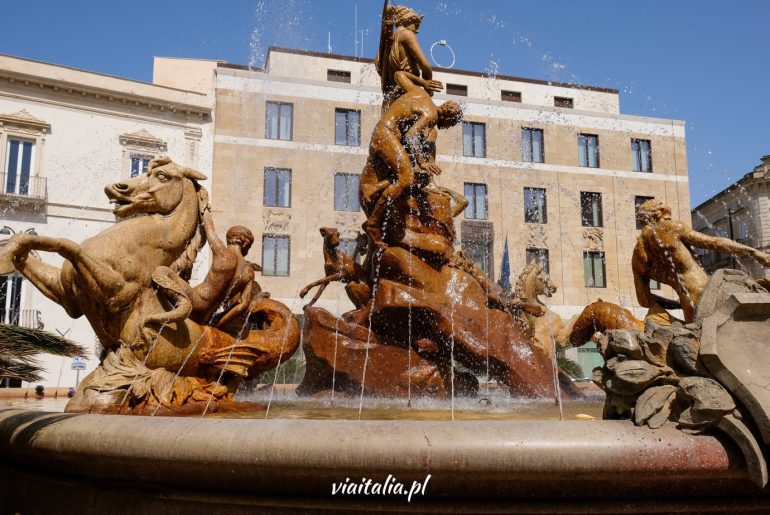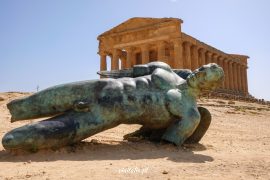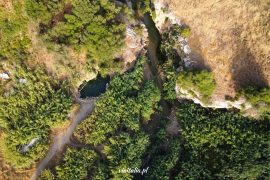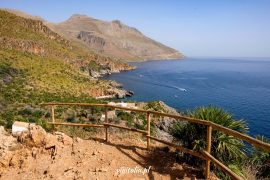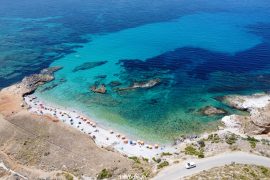If you are in the area of Catania, then in addition to visiting the popular Taormina go to Syracuse. Also known as the city of Archimedes, the historic town of Syracuse is another spot on the map of southeastern Sicily that I think is a must-see. It is one of the most important historical towns in Sicily. Syracuse offers a unique trip back in time, showing this stage of our civilization, which is described not only in history books, but also in the New Testament.
Syracuse is one of the Italian cities with the richest and also the longest history, which in addition is very well documented. Unlike other urban centers that boast ancient roots - such as the Sorrento - Here many ancient buildings have been preserved, which are a silent testimony to times gone by. It is thanks to them that Syracuse made it to the UNESCO World Heritage List. What to see in Syracuse? What attractions does the city offer? We invite you to read our guide to this ancient city.
Syracuse - highlights
Ortygia Island
For tourists, a visit to Syracuse is tantamount to a visit to Ortygia, a small island that covers just over 0.6 km² and is connected to the mainland by two bridges. Ortygia is the historic center of Syracuse, also known as the old town (Città Vecchia). The island is small enough that we will explore it easily on foot. In addition to exploring the popular sights, it's worth taking a stroll along the island's side streets and feeling the ancient atmosphere of the city.
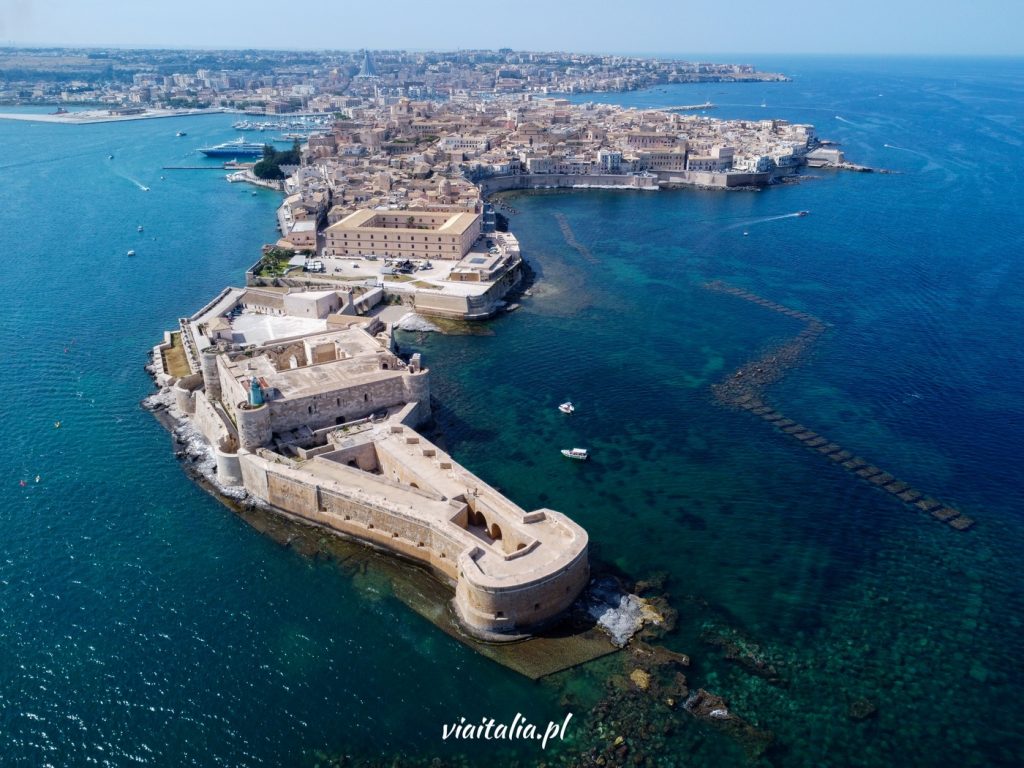
Archimedes Museum
Near the bridges connecting Ortygia to the city is the Museum of Archimedes, the famous philosopher and mathematician who came from just Syracuse. The full name of this facility is Museo Archimede e Leonardo - it collects exhibits related not only to the city's prominent resident, but also to another Italian genius, Leonardo da Vinci. Among other things, the museum features carefully crafted reproductions of models of machines that da Vinci invented. The models use techniques and materials characteristic of the era in which this outstanding visionary lived and worked. The exhibition includes about 60 works, as well as anatomical studies that show the artist's great interest in the anatomy of the human body. Part of the exhibition is, of course, dedicated to Archimedes himself and his mathematical research. The exhibition is designed in an extremely authentic way and transports visitors to a world that exists only in the pages of history.
The museum is interactive, so it is great for children to visit as well, including group tours from schools. The museum is open daily, from 10:30 am to 7 pm.
The cost of a ticket is 7€ for an adult, 6€ for students, 5€ for children. A family ticket, which includes the entrance of two adults with two children, costs 22€.
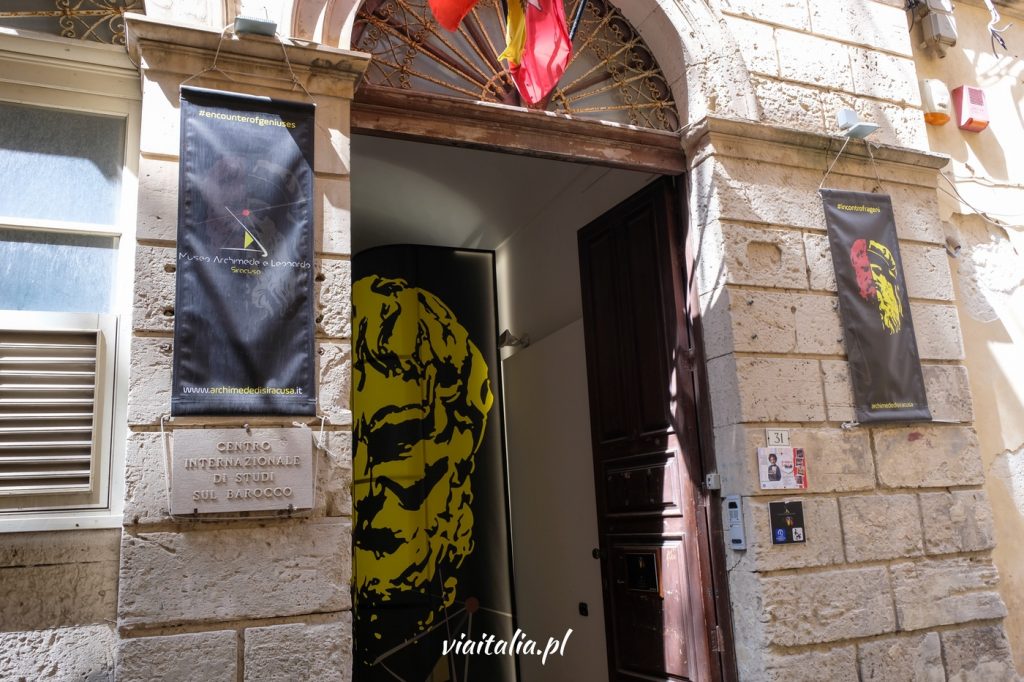
Archimedes Square (Piazza Archimede)
Moving on we come across another interesting point on the map of Ortygia, which is worth seeing. Archimedes Square, as it is referred to, was a crossroads in Greek times, and only began to take its current form around the 16th century, when buildings belonging to the nobility began to be erected around it. In the center of the square is the Fountain of Diana. On the northern side of Piazza Archimede is the Banco di Sicilia, a palace built in the first half of the 20th century. On the east side, you can admire the late Baroque Palazzo Pupillo, built in the late 18th century. The facade of the building has as many as five portals and numerous balconies, which are the hallmark of the building.
The oldest building in the square is Palazzo Lanza Bucceri, built at the end of the 14th century. The building underwent renovations in the 15th century, to which it owes its current Renaissance character.
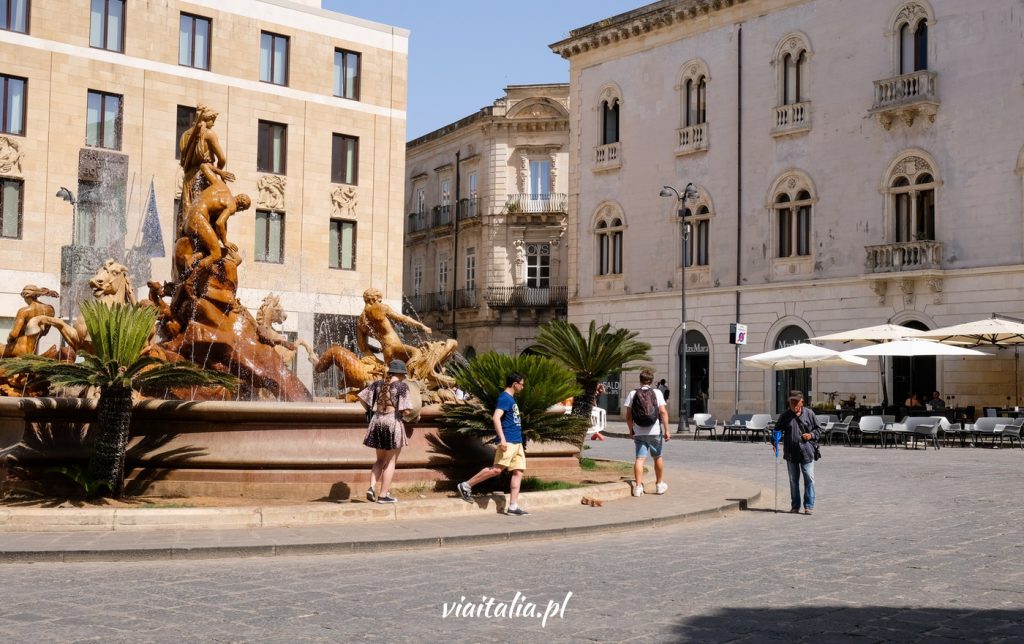
Diana's Fountain
In the center of Archimedes Square is the aforementioned fountain of the Roman goddess Diana - built in 1907 by sculptor, Giulio Moschetti. The fountain is incredibly impressive and is one of the major attractions in Syracuse.
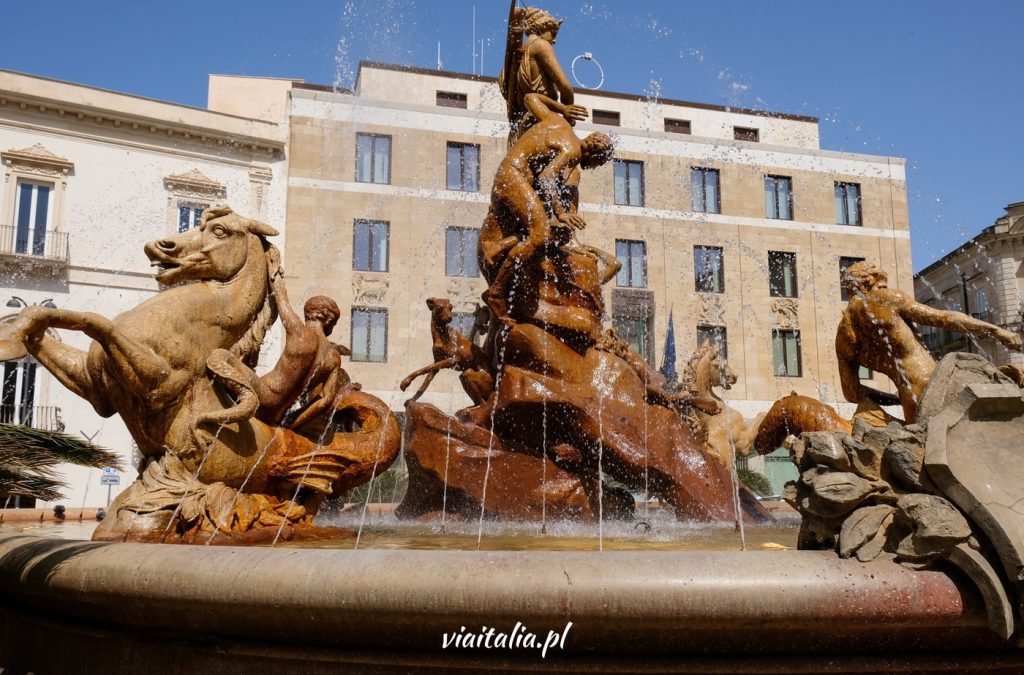
Cathedral Square (Piazza del Duomo) and the Cathedral of the Blessed Virgin Mary
The heart of the island of Ortygia is the Piazza del Duomo, or cathedral square, around which rise historic buildings such as the Cathedral of the Blessed Virgin Mary and 2 palaces. The cathedral is a particularly interesting monument due to the fact that its architecture combines different styles, popular over the centuries as it was expanded and improved.
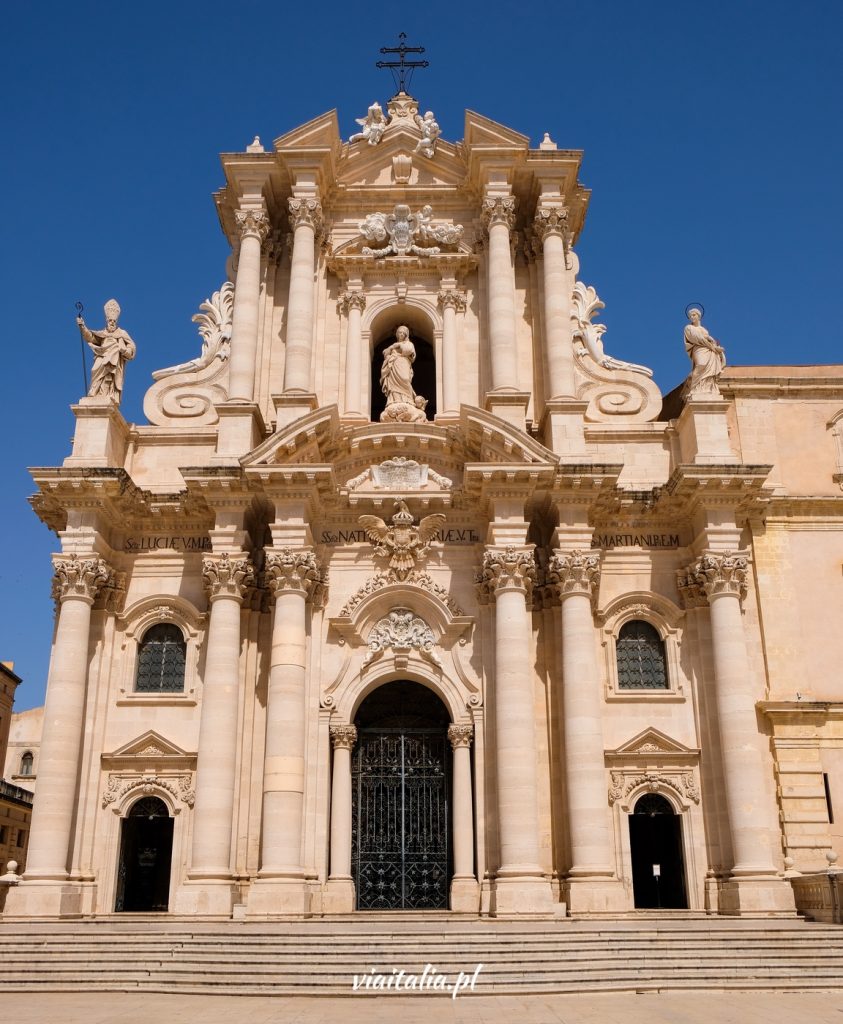
The ancient part of the building is the temple of Athena, decorated with Doric columns. Around it was built the cathedral, whose Baroque facade and massive stone staircase with statues of the apostles are today the hallmark of the Piazza del Duomo.
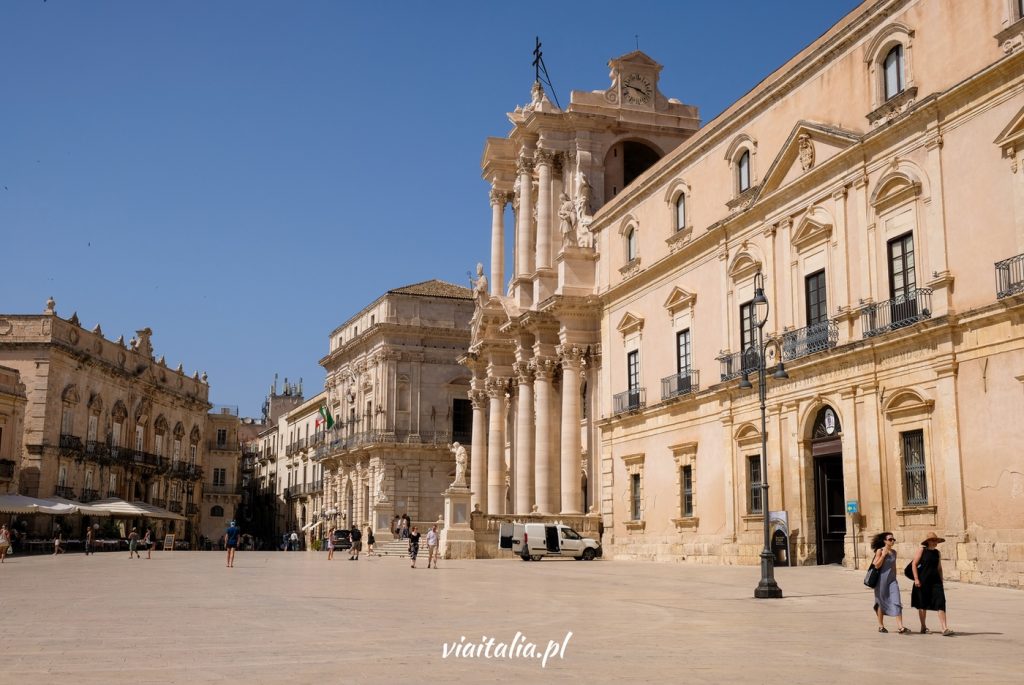
The current appearance of most of the buildings surrounding Cathedral Square is due to 17th- and 18th-century artists. In the square you can admire the Bishop's Palace, St. Lucia Church, Palazzo Beneventano del Bosco and the City Hall building, among others.
Palazzo Beneventano del Bosco deserves special attention because it was built on the site of a former medieval palace that was destroyed by an earthquake in the second half of the 17th century. The palace was rebuilt less than 100 years later in the Sicilian Baroque style. The building impresses with its complex form, with an inner childhood, numerous sculptures and frescoes. It is possible to visit the palace, but only with prior permission from the building's owners.
Castello Maniace
In the southernmost part of the islet of Ortygia there is a remarkable monument, whose uniqueness is emphasized by the natural circumstances. Maniace Castle, was built on the orders of the Roman Emperor, Frederick II between 1232 and 1240. Initially, the castle functioned as a royal residence, but at the end of the 15th century it changed its purpose and became a prison. In later years it was of great defensive importance, serving as an urban fortification. The building is distinguished by its ornate marble portal and austere style - it is built on a rectangular plan, with four towers on the sides. The fortress has a solid wall and a spacious courtyard.
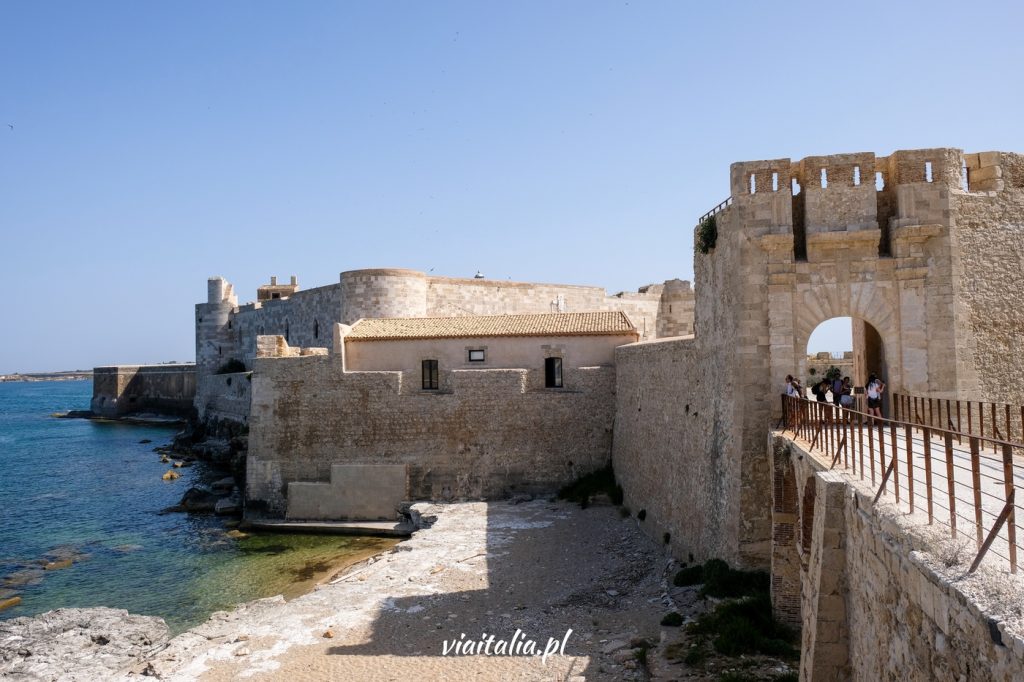
Today the castle is open to the public. The facility is open daily, on Mondays and Saturdays from 11:30 a.m. to 4:30 p.m., and on other days from 8:30 a.m. to 1:30 p.m. The price of a regular ticket is €8, and a discounted ticket is €6. Tickets can be purchased at the ticket office or online here.
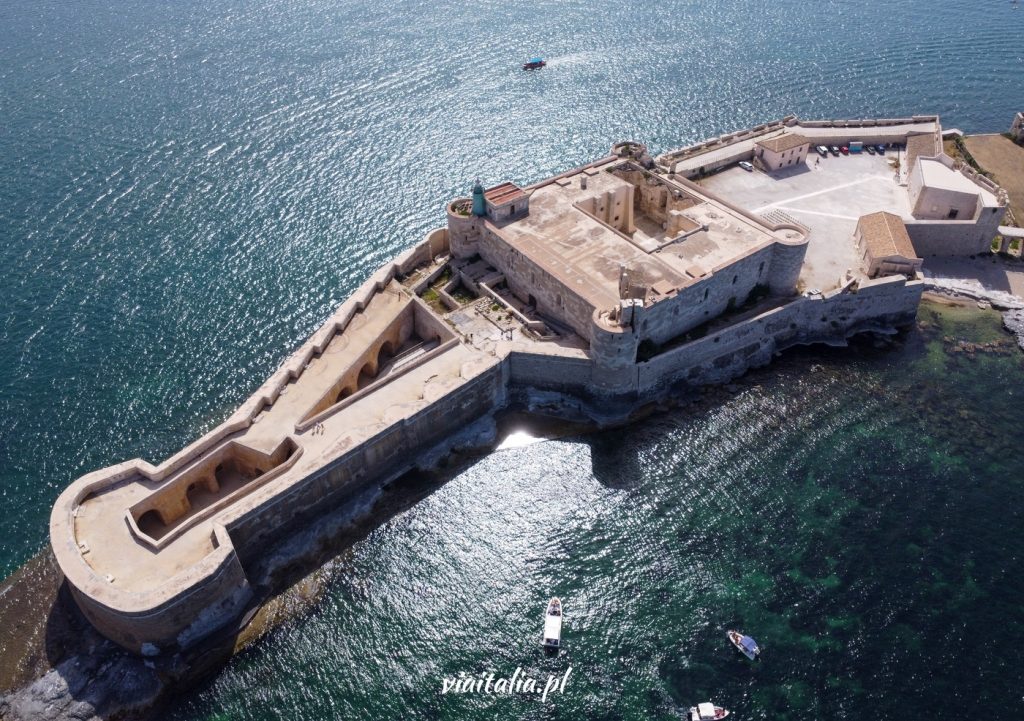
The source of Arethusa
There is another attraction in Ortygia that we can't leave out of our guide. This is the source of Arethusa, one of the most fascinating places in Syracuse. Overgrown with wild papyrus (a rarity in Europe), it has inspired and fascinated poets. Legend has it that the river god Alpheus fell in love with Arethusa, Artemis' nymph, and tried to seduce her. Arethusa fleeing from him was turned into a spring by the goddess Diana.
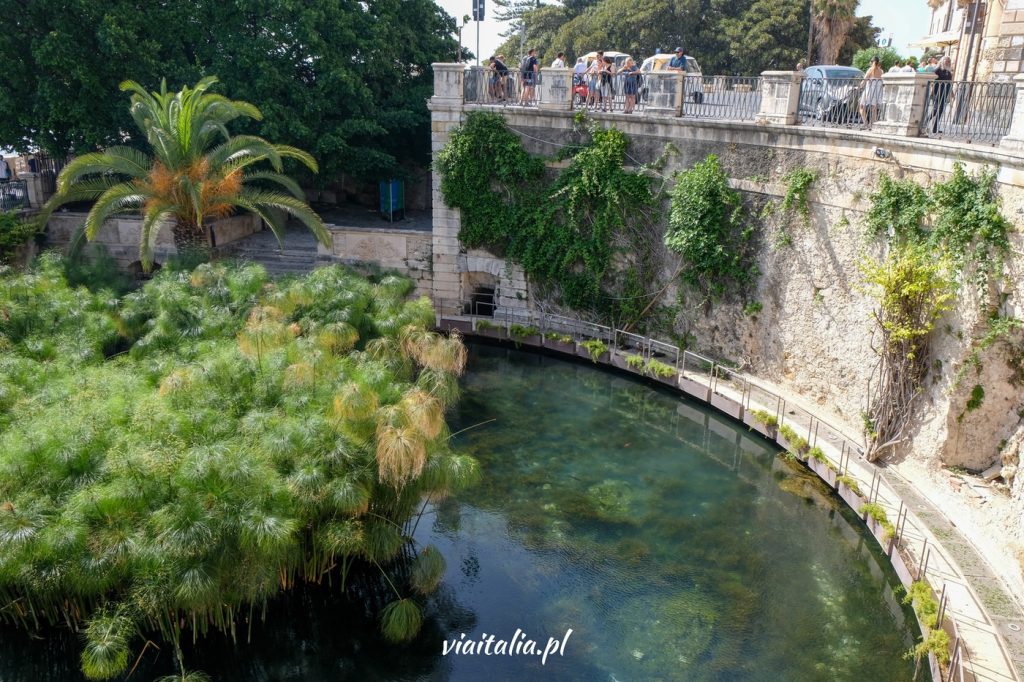
What else to see in Syracuse?
Syracuse is not only the historic center on the islet of Ortygia. It is also numerous attractions outside Ortygia that are also worth visiting.
Greek Theatre and Archaeological Park of Neapolis
The Greek Theater is the most famous monument located in Neapolis Park and Syracuse, a UNESCO World Heritage Site. The origins of the building date back to the 5th century BC. (although scholars say the base of the temple may date as far back as the late 6th century BC). - over time, the building has been rebuilt many times - including in antiquity (including in the 3rd century BC and in Roman times). In antiquity, the theater was extremely popular - it hosted not only prestigious performances, but also popular gatherings, trials and entertainment events. It was also an important place of worship.
The Greek Theater is an extremely attractive site for archaeological research, the subject of which it has been since the 19th century - and attracts many researchers all the time. It also intrigues hundreds of thousands of tourists, for whom this very monument is one of the most interesting in Sicily.
The second important monument in Neapolis Park is the Roman amphitheater in the shape of an ellipse, measuring 140 meters long and 119 meters wide. The monument is dated between the 2nd and 4th centuries, and there are speculations that construction began while the Roman Emperor Nero was still in power. This magnificent evidence of ancient architectural thought remained hidden underground for years, and was unearthed in 1839. The amphitheater hosted gladiatorial fights in ancient times, so it was an important center of entertainment for the local population, representing all classes, from the aristocracy to the common people.
What now remains of this monumental building is only a fraction of its former glory, but it still inspires admiration and respect from modern people for the craftsmanship of the ancient builders.
The archaeological park is open daily from 8:30 a.m. to 6:30 p.m. Ticket price is €10 for adults, €5 for youth, children under 12 years of age have free admission. On the first Sunday of each month there is free admission for visitors.
Quarries of Latomia and Ear of Dionysius
Another attraction is located near the Greek theater and is an interesting break from the monumental architectural monuments. Latomia are quarries that have been in operation since the 6th century BC. The precipitous caves are dug into the limestone, the most famous of which is Latomia del Paradiso, with depths of up to 65 meters. This so-called Paradise Quarry is characterized by exceptional acoustic properties.
The entrance to the cave resembles an auricle, which is why it is called the Ear of Dionysius. The name is believed to have been invented by Caravaggio himself, who visited the site in 1608 - it refers to the famous tyrant who is said to have set up a prison in the cave. Legend has it that the unusual acoustics allowed the suspicious ruler to listen to the whispers of his prisoners, which were amplified by the echoes.
The facility is open daily from 8:30 am to 3:30 pm.
Beaches in Syracuse
Syracuse is definitely not a place for beach lovers. In the city itself you will find one small cove with a rocky but very impressive beach.
Cala Rossa
Cala Rossa beach has a pebbly surface and is best suited as a place for morning relaxation, as it is bathed in shade in the afternoon. Cala Rossa, although very small, guarantees beautiful views of the old town buildings and is a graceful subject for photos. It will be an ideal place to cool down after exploring the city, especially on summer days when the temperature in Syracuse can exceed 40°.
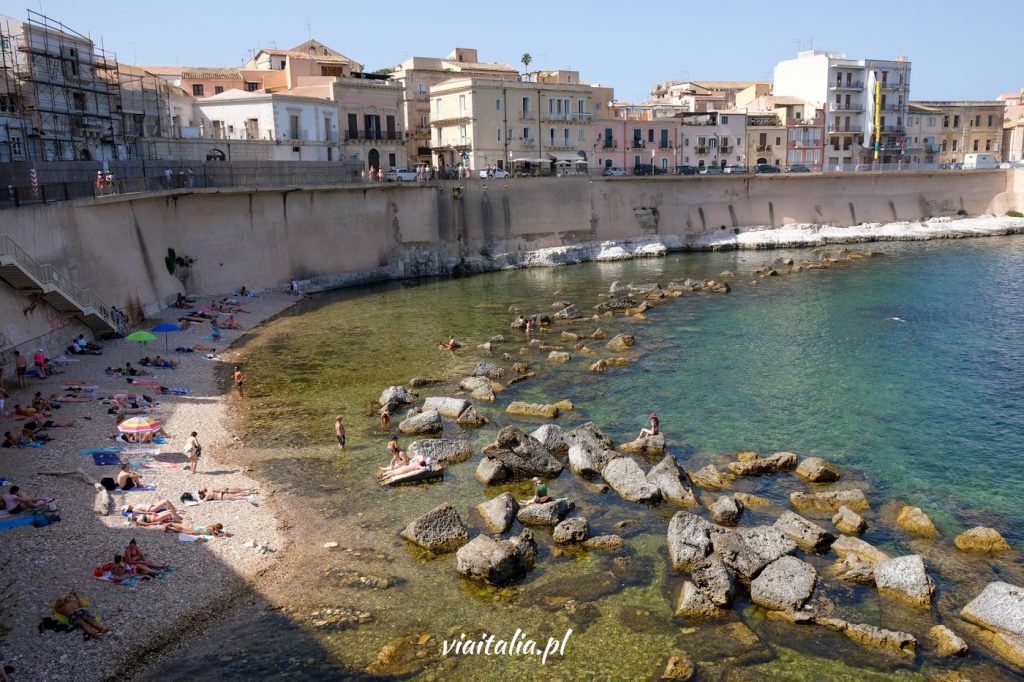
Spiaggia dell'Arenella
The sandy beach in the area is Spiaggia dell'Arenella, located about 10 km from the center of Syracuse. The beach is public and there are showers, it is also possible to rent deck chairs and umbrellas. The water is very clean and the descent to it is gentle. Next to the public beach is a larger, paid sector, which is a good option for those visiting the region in high season, when the free part can already be crowded.
Fontane Bianche
Still dalen to the south, about a 30-minute drive from downtown Syracuse, is one of the most popular beaches in Sicily, Fontane Bianche. It has a sandy ground, a gentle descent to the water and extensive infrastructure in the form of umbrellas and deck chairs. The place is suitable for families with children, and there are restaurants nearby. We, visiting this beach in June, unfortunately found crowds of beachgoers.
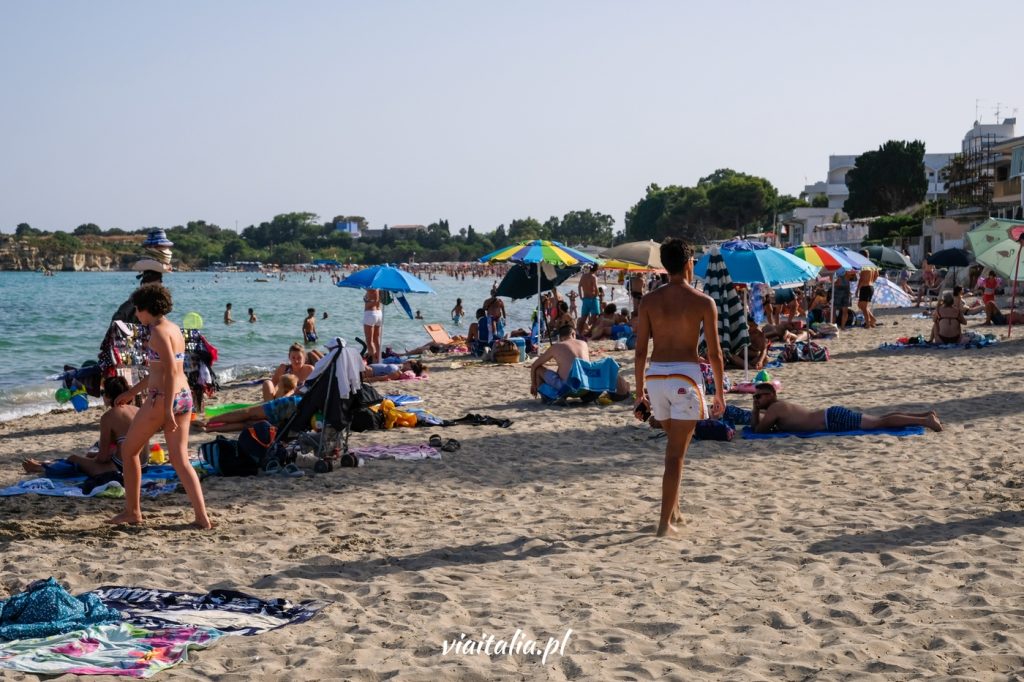
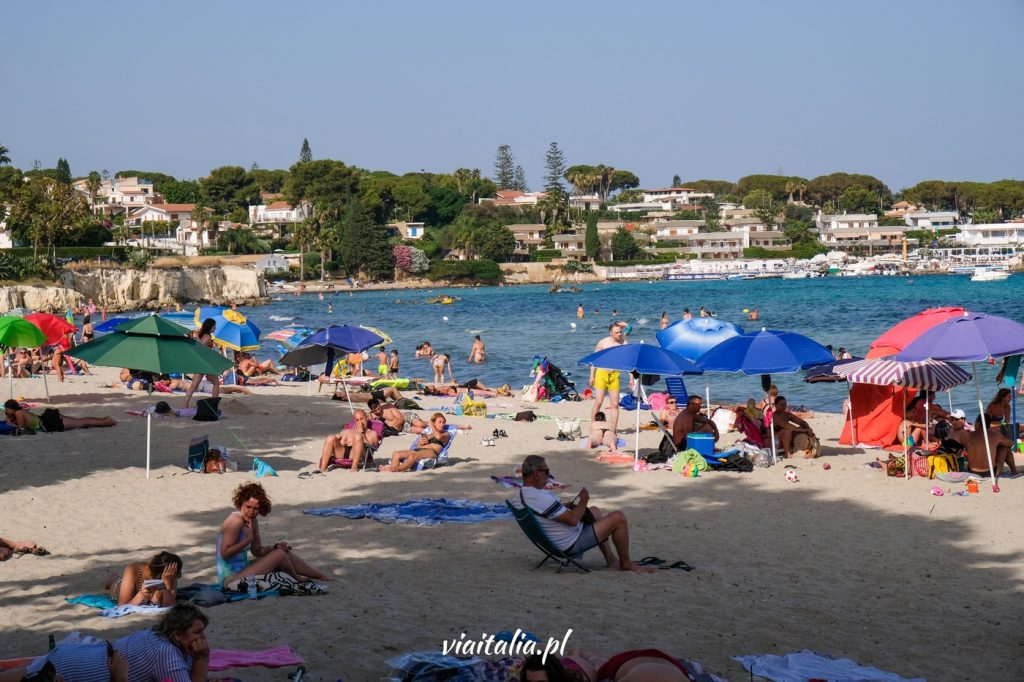
How to get to Syracuse?
The easiest way to get to Sicily itself is to fly a low-cost airline to Catania, Palermo Or Trapani. The closest about Syracuse is from Catania. We can get here by car, or by regional train. The trip takes a little over an hour, and a ticket costs €7.60.
Travel by public transport from Palermo is more complicated. It will be best to choose a bus that will take you to Syracuse in more than 3 hours. The cost of such a ticket is a dozen euros.
Weather
This region of Sicily is characterized by short and very warm summers and windy, cool winters. The weather is pleasant as early as late April and early May, when average maximum temperatures begin to approach 20 degrees Celsius and steadily rise to peak in July and August. W vacations Temperatures in Syracuse reach up to 30 degrees, nights are warm then and favor tourist escapades. Even in October, daytime thermometers here usually indicate more than 20 degrees.
Despite the favorable temperatures that Syracuse enjoys for most of the year, the region is best visited from May to September, as this is when the least amount of rainfall is recorded.
Kitchen
This region is a real treat for lovers of delicious bread - as it is famous for its bread, characterized by a crispy crust and soft center. The secret of the local bread is the flour, obtained from durum wheat, which is responsible for the unique taste of Syracuse bread. Local bread goes well with regional cheeses - especially ricotta and pecorino.
The area is also famous for its wines, especially those made from the Nero d'Avola grape variety. Vines have been grown in Syracuse since ancient times, and the wines obtained from Nero d'Avola are considered Sicily's most popular liquor.
Pasta dishes are very popular in Syracuse, served with fish and seafood. A common dish in this region is pasta with anchovies, garlic and breadcrumbs. Another well-known dish in these parts is pasta with Moorish sauce, where the ingredients are roe, tuna, cinnamon and citrus juice.
And as for Sicilian cuisine, we have committed a separate article on this topic. We invite you to read it:
Accommodation
In the center and in high season accommodation in Syracuse is quite expensive. For a hotel night, in a decent quality hotel near the center of Syracuse, we have to pay at least €100. We went to Syracuse for one day only, which is what most tourists do. It is worthwhile to book a hotel in advance.

